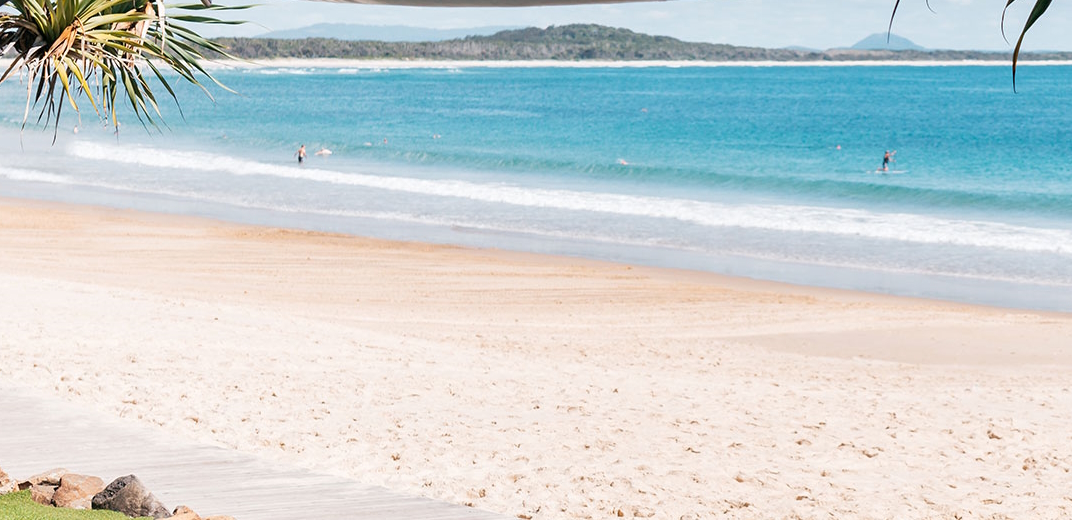Three Things to Consider When Heading for a Sea Change
- Written by NewsServices.com

The term "sea change" refers to a significant lifestyle change that involves moving from a rural or suburban area to a coastal or seaside town. The phrase originally comes from Shakespeare's play "The Tempest," which describes a transformation occurring in the ocean's depths. In modern usage, it is often used to describe a significant shift in someone's living situation.
There are numerous reasons why families decide to make a sea change. One common motivation is a desire for a more relaxed and enjoyable lifestyle.
Coastal areas offer a range of recreational activities, including swimming, surfing, fishing, and boating. These activities can provide a welcome break from the hustle and bustle of the city or urban living.
Another reason people choose to make a sea change is the appeal of a smaller community. Beach towns often have a strong sense of community, with friendly and welcoming residents. This can be particularly attractive for people looking for a more intimate and connected living experience.
For some, a sea change represents a new beginning.
It can be an opportunity to start fresh and pursue new interests or goals. Additionally, beach towns may offer unique job opportunities, such as positions in tourism, hospitality, or water-related industries.
Below are three things to consider if you are considering a sea change in Australia this year.
Calculate the Cost of Living
Housing costs are generally higher in beach locations than in rural areas. This is because beach towns are often popular tourist destinations, and demand for housing is higher.
According to the Domain House Price Report for Q4 2021, the median house price in the Sunshine Coast (which includes many popular beach towns) is $714,000, while in rural areas such as Roma, it is $190,000. If you are looking to move to the Gold Coast, speaking with a Buyers Advocate on the Gold Coast can be invaluable in determining what constitutes valuable - and affordable - living for you in your particular circumstances.
Rent prices are also generally higher in beach locations. For example, a one-bedroom apartment in Noosa Heads (a famous beach town) can cost around $350 per week.
In contrast, a similar apartment can be rented for about $200 per week in rural areas such as Charleville.
Then there is the cost of the move itself to consider.
Food prices can also be higher in beach locations due to higher demand and transportation costs. However, beach towns often have a wider variety of restaurants and specialty food shops that may not be available in rural areas.
For example, a basic lunch in a commercial area in Noosa Heads can cost around $17, while in a rural area such as Dalby, it can be around $14. Similarly, the cost of a dozen eggs in Noosa Heads can be about $5, while in Roma, it can be about $4.
The cost of utilities and transportation may be higher in beach locations due to higher demand and tourism-related activities. For example, the monthly gym membership cost in Noosa Heads can be around $70, while in a rural area such as Chinchilla, it can be approximately $50.
Overall, the cost of living in beach locations in Queensland is generally higher than in rural areas. However, the lifestyle and recreational benefits of living in a beach town may make the higher cost of living worth it for some people.
Housing and food prices are the two main factors contributing to this difference.
Look at Your Employment Opportunities
Employment opportunities differ widely between rural and country areas across Australia. Rural areas in Queensland are often characterised by industries such as agriculture, mining, and manufacturing.
In particular, areas in the western part of the state are known for their cattle and sheep farming, while the north is known for its sugar cane and tropical fruit crops.
As a result, many employment opportunities in rural areas include jobs such as farm labourers, machinery operators, and truck drivers.
Additionally, there may be job opportunities in healthcare, education, and government services.
By contrast, coastal areas in Queensland are characterised by industries such as tourism, hospitality, and retail.
Many of the more popular beach towns in the state are tourist destinations. As a result, there are many job opportunities in the tourism industry, such as hotel and restaurant workers, tour guides, and souvenir shop workers.
In terms of the overall job market, coastal Queensland tends to offer more job opportunities than rural Queensland due to the larger population and higher demand for tourism-related services.
However, the types of jobs available may be more limited, and competition for positions may be higher due to the larger pool of job seekers.
Consider the Lifestyle Differences
There can be significant differences in lifestyle between those who live in rural areas of Australia and those who live in coastal areas, including healthcare, social life, and access to amenities. Here are a few examples:
Your ability to access healthcare can vary significantly between rural and coastal areas of Australia.
Rural areas may have limited access to medical specialists and hospitals, and residents may need to travel long distances to receive medical care. You might also find that rural areas have a shortage of healthcare professionals.
Contrastingly, coastal areas often have more medical facilities and specialists, particularly in popular tourist destinations. Coastal areas may also have a wider variety of medical services, such as dermatology clinics or plastic surgery centres, that may not be available in rural areas.
Your social life will also undergo an upheaval.
Rural areas often have smaller communities with fewer social events and activities available. However, residents may have closer relationships with their neighbours and a stronger sense of community. In contrast, coastal areas may have larger communities with more social events and activities available, particularly during peak tourist season.
Coastal residents may have a wider variety of entertainment options, such as nightlife, music festivals, or beach sports, that may not be available in rural areas.
Overall, many good things can be said about having a sea change and relocating to a coastal village. But the shift can be significant, so it's a good idea to weigh up the costs, both in terms of real estate, moving costs - and the lifestyle changes that will be inevitable.







